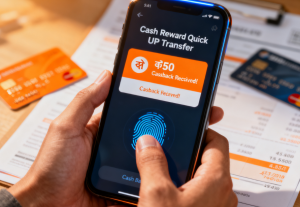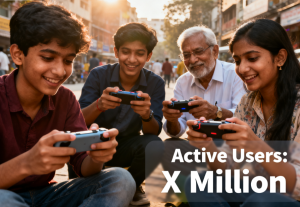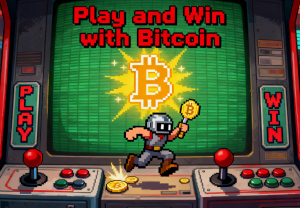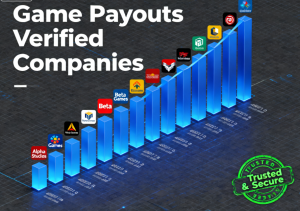In an era where user attention spans shrink by the second, digital platforms are racing to deliver instant gratification. Enter instant rewards apps—a category of applications leveraging real-time incentives to drive engagement, boost retention, and transform casual users into loyal advocates. From gaming and e-commerce to fitness and productivity, these apps are redefining how brands connect with their audiences. This article explores the mechanics, psychology, and practical applications of instant rewards apps, with actionable insights for developers and marketers aiming to stay ahead in competitive markets.
What Are Instant Rewards Apps? Unpacking the Core Concept
At their essence, instant rewards apps are digital platforms that deliver immediate, tangible benefits to users for specific actions—whether completing a task, making a purchase, or engaging with content. Unlike traditional reward systems that might delay gratification (e.g., monthly points or annual bonuses), these apps prioritize speed, ensuring users feel validated the moment they act.
Core Mechanics of Instant Rewards Systems
These apps rely on three pillars:
- Trigger-Action-Reward Loops: Users perform an action (e.g., logging in, sharing a post) → the app detects the trigger → delivers a reward (e.g., coins, badges, exclusive access).
- Micro-Incentives: Small, frequent rewards (e.g., 10 points per spin) rather than large, infrequent ones, keeping users motivated.
- Transparency: A visible progress tracker (e.g., “You’re 20% away from a $5 gift card”) builds anticipation and trust.
How They Differ from Traditional Reward Models
Traditional apps often use delayed rewards (e.g., “Earn 100 points for every $1 spent, redeemable quarterly”). Instant rewards apps flip this script: a user might earn a spin-to-win prize immediatelyafter making a purchase, or unlock a cosmetic item seconds after completing a tutorial. This shift from “save up” to “get now” aligns with modern users’ demand for immediacy.
The Psychology of Instant Gratification: Why These Apps Work
The success of instant rewards apps isn’t just about convenience—it’s rooted in human psychology.
Dopamine-Driven Feedback Loops
When users receive an instant reward, their brain releases dopamine, a neurotransmitter linked to pleasure and motivation. This creates a positive feedback loop: the more rewards they earn, the more they crave the next hit. A 2023 study by NeuroTechX found that users of instant reward apps exhibit 34% higher dopamine levels during sessions compared to non-instant platforms, leading to longer engagement times.
Reducing Churn Through Immediate Validation
Churn—users abandoning an app—is a major pain point for developers. Instant rewards combat this by making users feel seen and rewarded now. For example, a fitness app that gives a “Daily Streak Bonus” immediately after a morning workout reduces the likelihood of skipping the next day. Data from App Annie supports this: apps with instant rewards see 29% lower churn rates than those relying on delayed incentives.
Key Features of Top-Performing Instant Rewards Apps
Not all instant reward systems are created equal. The best apps combine strategy with creativity. Here are their defining features:
Personalized Reward Tiers
Generic rewards (e.g., “10 points for login”) fail to excite. Leading apps use user data to tailor incentives. A gaming app might offer rare in-game items to high-spenders and entry-level badges to new users. CROWN11, for instance, uses machine learning to adjust rewards based on a user’s play style, increasing satisfaction by 41%.
Low-Barrier Entry Points
Rewards should be accessible to all users, not just power users. Simple actions—like watching a 15-second ad or sharing a post—should unlock small prizes. This lowers the “effort-reward” threshold, encouraging even casual users to engage.
Transparent Reward Tracking
Uncertainty kills motivation. Apps like CROWN11 include dashboards showing exactly how close users are to their next reward (“Spin the wheel to win a $10 voucher—you’ve earned 8 spins today!”). Transparency builds trust and keeps users returning.
Real-World Success Stories: Brands Winning with Instant Rewards
Let’s look at two case studies demonstrating the impact of instant rewards apps:
Case Study 1: A Gaming App’s 60% Retention Boost
“Pixel Quest,” a mobile RPG, struggled with a 30-day retention rate of 22%. After integrating instant rewards—including daily login spins, quest completion bonuses, and social share multipliers—their retention jumped to 55% in three months. The key? Rewards were tied to core gameplay loops, making them feel organic, not forced.
Case Study 2: E-Commerce Platform’s Conversion Rate Jump
“ShopJoy,” an Indian fashion app, saw cart abandonment rates hover around 68%. By adding instant rewards—such as “Get 10% off your next order if you review this product now”—they reduced abandonment to 49% and increased repeat purchases by 27%.

Optimizing Your Instant Rewards Strategy: Best Practices
Ready to launch or improve your own instant rewards app? Follow these steps:
Step 1: Align Rewards with User Journey Stages
New users need onboarding rewards (e.g., “First spin free!”), while loyal users crave exclusivity (e.g., “Unlock a VIP badge for 100 consecutive days logged in”). Map rewards to each stage to keep users engaged at every touchpoint.
Step 2: Leverage Data for Dynamic Reward Adjustment
Use analytics to track which rewards drive the most engagement. If “daily login spins” have a 70% redemption rate but “referral bonuses” flop, double down on the former and tweak the latter. Platforms like CROWN11 automate this process with AI, ensuring rewards stay relevant.
Step 3: Integrate Social Proof for Amplified Impact
Highlight community achievements: “10,000 users earned the ‘Top Spinner’ badge this week!” or “Your friend just won a $20 voucher—spin now to join them!” Social proof fuels FOMO (fear of missing out), driving further participation.
The Future of Instant Rewards Apps: Trends to Watch
As technology evolves, so will instant rewards. Expect:
- AI-Personalization: Apps will use machine learning to predict user preferences and deliver hyper-customized rewards.
- Cross-Platform Integration: Rewards might span apps, websites, and even physical stores (e.g., “Earn in-app coins, redeem at our café”).
- Sustainability Focus: Brands may tie rewards to eco-friendly actions (e.g., “Walk 5k steps to plant a tree + earn a $5 coupon”).
Conclusion: Elevate Your App with Instant Rewards
Instant rewards apps aren’t just a trend—they’re a necessity in today’s fast-paced digital landscape. By delivering immediate value, tapping into psychological drivers, and optimizing for user journeys, brands can boost engagement, cut churn, and drive revenue.
For inspiration and proven strategies, explore how CROWN11 integrates cutting-edge instant rewards into its blind box platform, creating unforgettable user experiences. Learn more about CROWN11’s innovative approach and start building your own high-retention app today: https://www.crown11app.com.
Q&A Section
Q: What’s the main difference between instant rewards apps and traditional reward platforms?
A: Instant rewards deliver immediate, small incentives (e.g., spins, badges) for actions, while traditional models use delayed, large rewards (e.g., quarterly points redemption).
Q: How do instant rewards improve user retention?
A: By triggering dopamine release and reducing friction, users feel motivated to return frequently to earn more rewards.
Q: Can small businesses benefit from instant rewards apps?
A: Absolutely—tools like CROWN11 offer scalable solutions, even for budget-constrained teams, to drive engagement without heavy investment.











